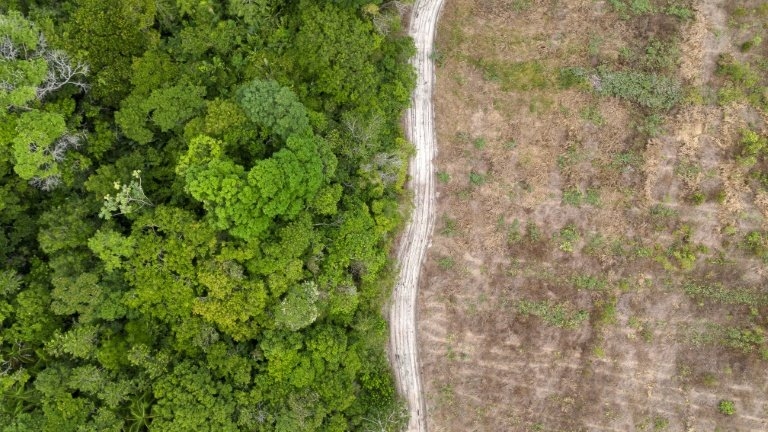Geopolitics of Political Islam in Europe

1 In France, a group of high-ranking officials (whose number and names were not disclosed) were tasked in April 2024 by Macron, in his capacity as president of the National Defense and Security Council – which includes the ministers of the Interior, Foreign Affairs, and Defense – with a mission : to assess the orbit/area of influence of the Muslim Brotherhood and political Islam in France. “ This mission should formalize, through a vector distinct from the usual output of intelligence services or academic research, a report that clarifies the threat posed by Islamist ‘entrism’ in terms of security and national cohesion. ”
" Entrism " (from the French " entrisme ") is a technical term that defines the tactic of organized insertion into existing institutions or movements—parties, unions, associations, municipal councils, schools—with the aim of influencing, from within, their objectives, decisions, and distribution of resources, without publicly declaring the full agenda of those promoting it. The term was coined in Trotskyist circles in the 20th century to describe the entry of militants into larger parties in order to reorient them, and its typical modus operandi consists of formal affiliation, conquest of secondary positions, control of committees, production of internal rules and alliances of convenience; and only after securing control is there an attempt to change the general orientation. It differs from " lobbying " or "infiltration" because these act from the outside, declaring interests, while " entrism " acts internally, resorting to opacity of objectives and operating through legal means. " Entrism " operates from within institutions, generally following the organization's formal rules, but with a strategic purpose distinct from its original mission. In the context of political Islam, the term is used to describe strategies of prolonged presence in local structures (associations, education, community mediation, advisory councils), aiming at normative influence and access to funding, without resorting to violence.
The novelty of this French study lies in its approach to diagnosing and analyzing not the Islamic terrorist threat, but the risk of legalistic and institutional influence that, operating through formal channels—political-associative, educational, and municipal—undermines civic cohesion and the neutrality of the French state. The mission traveled to four European countries and ten French departments, interviewing over two hundred people (state officials, religious leaders, academics, essayists, elected officials, diplomats), and the final report, in its 75-page public version entitled “ The Muslim Brotherhood and Political Islam in France ,” was published on May 21, 2025, by the French Ministry of the Interior.
According to the respective “ Dossier de Presse ”, “ The report highlights a serious threat, marked by a double discourse that combines dissimulation and apparent respect for the rules, with the aim of replacing belonging to the national community with new forms of loyalty that break with the [French] republican tradition, and demonstrates the need to raise awareness among the general public and public decision-makers about the reality of this threat. Based on the recommendations made in the report, the [French] National Defense and Security Council, meeting on May 21, 2025, presented the first guidelines that will lead to the implementation of a national action plan.” The report “was classified to protect sources that should not be exposed. It was also necessary to preserve the secrecy of ongoing judicial proceedings. The version released to the public today has these elements purged.”
The identified threat has less to do with high-impact public acts and more to do with a cumulative process of institutional reconfiguration. Through political-associative, educational, and consultative means, a local soft law is produced which, if not scrutinized, tends to crystallize into administrative customs and "permanent exceptions." The result is a silent erosion of universal standards —equal treatment, state neutrality, impartiality in resource allocation—accompanied by the capture of discreet bodies (commissions, juries, councils) where agendas and budgets are decided. This shift of the decision-making axis to low-visibility arenas diminishes accountability and creates functional dependencies between public powers and certain clusters of entities.
To distinguish “legalistic influence/ entryism ” from the legitimate exercise of religious/associative freedom, the mission applied operational criteria: (i) undeclared transformative purpose; (ii) capture of bodies/resources (committees, subsidies, public spaces); (iii) repeated production of local soft law (opinions/codes that become de facto norms). Typical examples: segregation of activities in public facilities; renewed “temporary” protocols that change school rules.
2 In Germany, the monitoring of Islamism still follows the path that was avoided in France: that of the “ usual production of intelligence services,” or, in colloquial terms, of secret services, which focus primarily on the Islamic terrorist threat, without specifically considering “ entryism ,” suggesting that there is still no full awareness of this phenomenon in that country. In practice, monitoring is conducted with a classic security focus; legalistic dimensions are observed, but in a non-systematic way, lacking a specific module on “ entryism .”
The leading role belongs to the BfV ( Bundesamt für Verfassungsschutz ) , the domestic intelligence service overseen by the Federal Ministry of the Interior, responsible for monitoring and assessing threats to the liberal-democratic order (right-wing/left-wing/Islamist extremism, espionage, hostile influence). The BfV produces an “Annual Report on the Protection of the Constitution,” analyzing high-risk organizations and classifying them from “suspected case” to “confirmed extremist.” The 2024 report considers the threat of Islamist terrorism in Germany to remain high, estimating a “potential number of people” in Islamist extremism of approximately 28,000 individuals, of whom approximately 9,500 are violence-oriented. All this in parallel with high levels of “politically motivated crime – religious ideology,” including a small but not negligible fraction of violent offenses. The report highlights plans involving small cells and lone actors, often low-tech and rapidly executed due to online radicalization. Within the phenomenon as a whole, Salafist groups are numerically dominant; structured ecosystems include Millî Görüş, the Muslim Brotherhood/DMG (an organization under observation), and banned or designated actors such as Hamas. Regarding the risk with European projection, the Khorasan Province of the Islamic State (ISKP) is identified as the most relevant branch of ISIS.
In the same 2024 report, the BfV noted that the party “AfD – Alternative für Deutschland ” (Alternative for Germany) expressed “hostile positions towards foreigners and Muslims,” reflecting an ethnic-ancestral concept of nation, and classified the AfD as a “ Verdachtsfall ” (suspected case) of right-wing extremist tendencies. On May 2, 2025, the BfV, in a new report, reclassified the AfD as “ gesichert rechtsextremistische Bestrebung ” – that is, confirmed extremism, surpassing mere “suspicion” – with the federal government announcing this new classification – which was the subject of a pending legal challenge – at a press conference by the Minister of the Interior, Nancy Faeser.
3. To obtain a European overview of the phenomenon of political Islam, a comparative matrix was developed to measure the risk of “legalistic” influence and socio-political tension associated with the phenomenon. The focus is administrative and societal—institutional entryism , production of local soft law , and pressure on schools and municipalities—distinct from the threat of armed terrorism. The scores result from the consolidation of recent official sources (reports on the protection of the Constitution/internal security, hate crime statistics, ministerial and national coordinator statements), validated by cross-checking with European reports, to support prioritization and proportionate response. A more complete bibliography can be found at the end of the text.
- For each country, Probability (P) and Impact (I) were assigned on a scale of 1–5, with Risk = P×I (some scores fine-tuned to the tenth), with a theoretical maximum of 25 points (5×5).
- Column P considers: (i) street/online mobilization (30%); (ii) relevant hate incidents (25%); (iii) administrative measures/dissolutions/bans (20%); (iv) organizational density/local clustering (25%).
- Column I considers: (i) functional disruption in schools/services/infrastructure (30%); (ii) institutional pressure (litigation, “technical” opinions) (20%); (iii) national media impact (20%); (iv) violence/confrontations in protests (30%).
- Traceability: a table is attached per country with 3–5 inputs → score (e.g., number of protests >50k/year; series of hate crimes per 100k; number of administrative measures; associative density; audience of “preachers 2.0”). A mini stress test is also included (↑20% in hate incidents ⇒ +0.2 in P).
- Tiebreaker and transparency: countries are ranked by R (P×I), then by P and by I, with P/I published to the tenth.


4. The matrix points to a geographical core of very high risk of penetration of political Islam in Germany, France, Belgium, the Netherlands, the United Kingdom, and Austria, where the combination of high street mobilization, measurable polarization (peaks of antisemitism and Islamophobia), dense associative ecosystems, and active administrative response (inspections, dissolutions, prohibitions) creates an environment conducive to "legalistic" influence and institutional entrism . Three to five indicators are applied per country (protests >50k/year; hate crimes/100k; number of administrative measures; associative density; weekly audience of "preachers 2.0") and P/I ratios to the tenth order are adopted with a ranking graph.
In a second ring are Italy, Spain, Switzerland, and Sweden, where the pressure results mainly from cycles of protest and sectoral disruptions (campuses, ports, transport), with great territorial variance; here the impact weighs as much as the probability. Transition to “very high” when P≥4.2 and I≥3.8 for ≥2 quarters; 2–3 sentinel cities are identified per country (Milan/Rome; Madrid/Barcelona; Zurich; Stockholm/Gothenburg).
Ireland, Norway, and Denmark emerge as medium risk, with polarization and regular protests, but lower organizational density and more contained functional disruption, while Portugal, Poland, and the Czech Republic remain at low-medium levels, marked by less dense legalistic structures and mostly episodic episodes—still requiring attention to demonstration effects and the importation of models.
5. France is, in practice, the only European state that has moved towards a specific National Action Plan for the vector of “legalistic influence/ entryism ” of political Islam. The aforementioned report , Frères Musulmans et Islamisme Politique en France, itself structures the operational recommendations that serve as the immediate basis for this plan: starting by legally defining the phenomenon, producing regular public documentation—reports by experts and academia, in addition to the annual chapter of the competent services—and empowering decision-makers (local authorities, school administrations, government) to distinguish legitimate religious practice from strategies of institutional capture. The report also outlines a European and financial dimension – raising awareness among EU institutions and working with the FATF ( Financial Action Task Force , an intergovernmental body that sets global standards against money laundering, terrorist financing and proliferation financing, on associative financing) – and proposes investing in a “contemporary French Islamology,” complemented by “strong signals” of public policy that reduce grey areas: clarification of funeral rules within the national territory, integration of Arabic language teaching into public schools (instead of outsourcing it to networks of origin), and an external narrative that discourages the instrumentalization of the Israeli-Palestinian conflict, while simultaneously preserving fundamental freedoms.
In terms of implementation, the plan stemming from the report translates into proportionate, non-security-focused administrative measures: transparency in funding (ultimate beneficiary and origin of funds, audits), governance and integrity in the committees that distribute public resources (rotation, declaration of interests, publication of criteria and minutes), civic contracting with schools and municipalities (universal access, non-segregation, qualified supervision), and public monitoring through simple probability/impact indicators with accessible summaries. The logic is to protect the neutrality of the State and civic cohesion with instruments of good administration, leaving counterterrorism for what is, in fact, terrorism.
The remaining European countries should adopt similar plans, anchored in the same pillars: operational legal definition of the phenomenon; documentation and training; European/financial axis; public policies that eliminate incentives for the creation of parallel norms; and a transparency and accountability module that allows for democratic scrutiny without stigmatizing communities. Such alignment would create regulatory predictability and reduce asymmetries between jurisdictions, closing the door to legalistic entrism without confusing faith with organizational behavior.
6. It is also important to point out the methodological asymmetry between France and Germany. The former adopted a comprehensive reading of the legalistic/ entryist vector — with metrics of governance, litigation, local soft law and capture of commissions — while the latter remains anchored in a classic security framework, centered on politically motivated crime, terrorism and extremism, according to the traditional typologies of the Verfassungsschutz (German system for the protection of the Constitution which includes the set of internal intelligence services monitoring threats to the liberal-democratic order).
Within this framework, Berlin has prioritized the restriction and surveillance of radical right-wing organizations—including the AfD—within a logic of “militant democracy” understandable in light of the legacy of Nazism. This priority, however, can create a methodological blind spot: by concentrating institutional energy on containing actors who, in certain contexts, also challenge legalistic entryism , the system risks underestimating or detecting too late the dynamics of non-violent Islamist influence, such as normalization by precedent, the redirection of subsidies, and the capture of discrete decision-making processes. This method reduces institutional sensitivity to the dynamics of Islamist legalistic influence.
This results in three effects: non-comparable risk perceptions (the French approach measures the legalistic vector; the German approach hardly isolates it), inadequate instruments (a penal/counter-terrorism response for phenomena whose effective lever is administrative), and a "selective saturation" that consumes analytical capacity and political capital, both necessary for the early prevention of Islamist entryism .
It is therefore necessary to introduce into the German reporting architecture: (i) a specific “legalist/ entryist ” module, (ii) to symmetrize surveillance—maintaining scrutiny of the radical right but without reducing it to positions on Islamist legalist networks, identified in the French report as a “serious threat” to national cohesion, by “replacing membership in the national community with new forms of loyalty that break with the [French] republican tradition”, and (iii) to strengthen transparency and governance in municipal grants and commissions (rotation, incompatibilities, public criteria), taking advantage of methodologies already operational in France, Austria and Belgium, in order to harmonize thresholds and metrics for surveillance at the European level.
- EUROPOL — EU TE-SAT 2025 (annual report), June 2025. Overview of attacks, detentions and trends in the EU (base year 2024). [ PDF ] · [ Report page ]
- OSCE-ODIHR — Hate Crime Data (annual update, Nov.). Methodologically comparable portal and report; country-specific series. [ Portal ] · [ Presentation 2023/24 ]
- FRA — Third survey on antisemitism (EU) (July 2024). Perceptions and experiences of Jews in the EU (pre- and post-7/10/2023, with supplementary consultation). [ Report ]
- MI — “ Muslim Brothers and Political Islam in France” (dossier/public version; May 21, 2025). 2024 commission; conclusions and government guidelines. [ Official page ]
- Law No. 2021-1109 (24/08/2021) “comforting respect for the principles of the Republic”. Legal basis for associative transparency, education and funding. [ Legifrance ]
- BfV — Report on the Protection of the Constitution 2024 (Brief Summary, EN), June 10, 2025). Statistical and analytical framework by phenomenon (including Islam). [ PDF ]
- BfV — Verfassungsschutzbericht 2024 (DE, full version)** (June 10, 2025). [ PDF ]
- BfV (portal, EN)**. Thematic sections (incl. Islamism/Islamist Terrorism). [ Homepage ]
- DSN — Verfassungsschutzbericht 2024** (May–July 2025). Annual report of the State Protection and Intelligence Service Directorate. [ PDF ] · [DSN “ Publications ” page] · [ BMI Note ]
- Context (reference case 2024, Vienna)**: attempted mass concert bombing (EU risk indicator). [ Reuters ]
- OCAM/CUTA — Annual Report 2024** (June 2025). Threat level and trend summary (incl. tensions 2023–2024). [ PDF ]
- NCTV — Dreigingsbeeld Terrorisme Nederland (DTN, June 2025)**: Level 4 (“substantieel”) maintained; modus operandi and likely targets. [ PDF ] · [ Government Note ]
- MI5/ JTAC — Terrorism threat levels (definitions and status)**. [ Page ]
- Home Office — Hate crime: England & Wales (year ending Mar. 2024)**. [ Bulletin ]
- CST — Antisemitic Incidents Report 2024**. [ PDF ]
- Tell MAMA — The New Norm of Anti-Muslim Hate (2025)** — 2024 consolidated data. [ PDF ]
- DIS — Annual information policy report for security (2024)** (presentation March 4, 2025). [ Portal ] · [ Page 2025 ]
- Ministry of the Interior — Statements on expulsions for State security reasons (2024–2025)**. [ Example ]
- Ministry of the Interior — Anti-Terrorist Alert Level (NAA). [ Official page ]
- Moncloa — Level 4 reinforcement (Easter 2025). [ Note ]
- Observatory of Antisemitism (FCJE) — Publications/Reports. [ Page ]
- Torre-Pacheco Disturbances (July 2025) — Government Summary. [Bulletin ( PDF )]
- Government Offices — National strategy against violent extremism & terrorism (2024)**: includes intention to review external funding to entities linked to extremism. [ PDF ]
- Brå — Antisemitic hate crime (2025)**. Qualitative and institutional evidence post-7/10. [Page](https://bra.se/english/publications/archive/2025-08-29-antisemitic-hate-crime) · [ PDF ]
- Federal Council — Federal law banning Hamas (in effect since May 15, 2025)**. [ Statement ]
- PET/CTA — Vurdering af terrortruslen mod Danmark 2025** (DK and EN). [DK ( PDF )]() · [EN ( PDF )]
- AKVAH — Antisemitic incidents in Denmark 2024**. [Report ( PDF )]
- PST — National Threat Assessment 2025 (EN)**. [ PDF ]
- An Garda Síochána — Hate crime date 2024**. [ Page ]
- RASI 2024 — Annual Internal Security Report** (published Apr. 2025). [ Official Portal ]
- BIS — Annual Report 2024 (EN)**. [ PDF ] · [ Reports Page ]
observador

%2520Is%252075%2525%2520Off%2520at%2520The%2520Home%2520Depot.png&w=3840&q=100)



